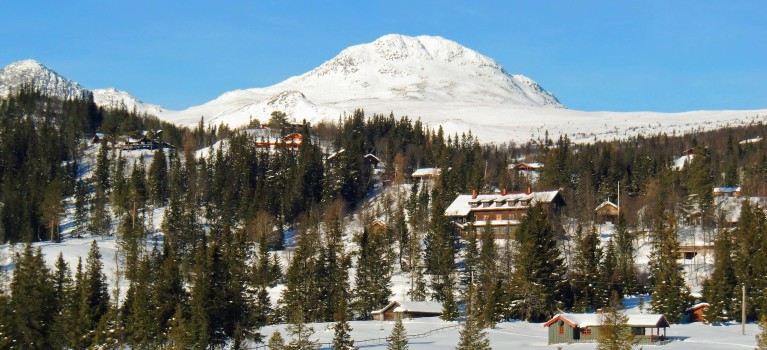Rjukan and Notodden on the UNESCO world heritage list

At Tuddal you can enjoy beautiful nature, mountain and forests, beautiful rivers and a national worthy cultural landscape at Bondal, 15 km from Tuddal. Tuddal bygdetun in the center of Tuddal you can see many old houses and at Tuddal høyfjellshotell you can hear the silence and just enjoy gourmet food in quiet surrondings. The hotel is from 1895.
The area is popular to families, who love nature and quiet surroundings.
From Tuddal you can reach Unesco attractions i Notodden and Rjukan in 20 minutes up to 1 hour.
The world heritage area – Vemork, the industrial adventure, the art and the architecture i Notodden og Rjukan is 40 km from Tuddal.
Gaustatoppen, 1883 moh with a breathtaking view to 1/6 of Norway is 20 minutes away.
Gaustabanen a cable train inside the mountain Gaustatoppen has been a hidden secret, which takes passengers about 860 meter horisontal into the mountain.
In the middle of the mountain, you will be taken up to 1800 above sea level. From there is a short distance to the caferia where you can buy coffee and waffels. The trip from bottom to top of the Gaustatoppen takes 15 minutes.
Or you can walk the path, it takes about 2 hours.
You can take the lift to Hardangervidda, the Krosso cabletrack, 1 hour from Tuddal by car.
Heddal Stave Church is worth a visit, 800 years old, about 30 minutes away.
The bathing land, Rjukanbadet – is an popular place for families, summer 45 min, wintertime 1 h 15 min
About the world heritage area:
The industrial fairytale started at Notodden. When Sam Eyde first saw Rjukanfossen (Rjukan´s waterfall) in 1888, he wasn´t only struck by the waterfall´s majesty. He was even more impressed by its power. «Think if that power could be used for something.» In 1903 Sam Eyde purchased the rights of Rjukanfossen. In 1905 Norwegian Hydro was founded, headquartered in Notodden.
In 1907 the decision was made to build a factory and the town of Rjukan. There were both technical, economic and political uncertainty connected to the power line of the electric facility, and Hydro decided to build the factory and the town close to the power source, the waterfall “Rjukanfossen”.
In 1909 King Håkon opened Rjukanbanen as a transport link with a railway and a railway ferry from Rjukan via Notodden to Porsgrunn – the gateway to the world market.
In 1911 the world’s biggest electrical power plant was finished at Vermork, and the first barrel of fertilizer was exported. In 1915, an even bigger facility was built in Rjukan; Såheim power plant.
These events marked the beginning of the modern industrial revolution in Norway, and the inception of the welfare state.
As a World Heritage site, we can tell the history of water made into electical power on its way from the mountains to the sea; of the electrical power that developed the foundation for industry and workplaces for the people; and of the development of the welfare state in Norway – from the poorest country to the richest within 100 years. Read more here:



